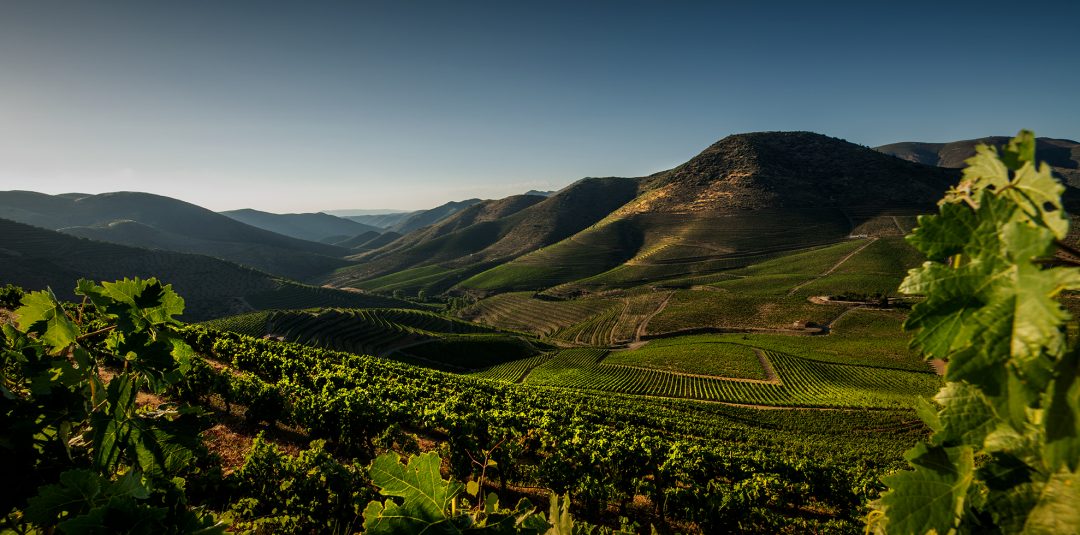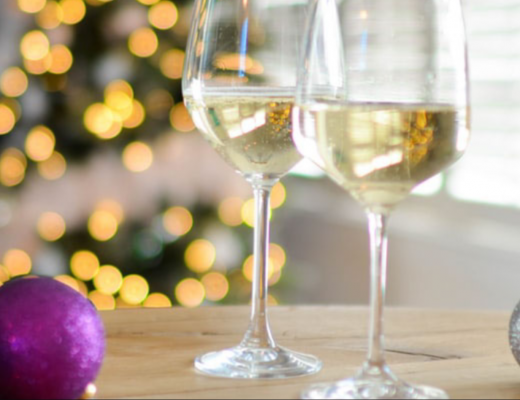The wines of Casa Ferreirinha are versatile, to say the least. From their every day Planalto and Esteva wines to the storied Barca-Velha cuvée, Casa Ferreirinha has cemented a solid reputation as a leading still wine producer in Portugal’s Douro Valley.
Casa Ferreirinha was borne from the fruits of the labour of the Ferreira Port family. In the 1950s, wine production in the Douro Valley was dedicated to the sweet, fortified Port wine. Meanwhile, at Ferreira, technical director Fernando Nicolau de Almeida was hard at work crafting a high-quality still red wine. His creation, Barca-Velha, remains a reference among Portuguese red wines to this day.
Casa Ferreirinha is the proprietor of five wineries (or Quintas) throughout the Douro, and is part of the powerful Sogrape Vinhos group. The wines of Casa Ferreirinha run the gamut, from dry white, rosé, and red table wines to heady Port wines.
In early May, I had the pleasure of tuning in to a virtual tasting with current head winemaker, Luis Sottomayor. He lead us through a fascinating tasting of eight emblematic dry wines of Casa Ferreirinha.
Casa Ferreirinha “Planalto” Reserva, Douro, Vinho Branco 2019 – 87pts. VW
The Planalto cuvée is named for the high altitude plateaux vineyards from which the grapes are sourced. These sites are selected for the refreshing acidity of their grapes. Produced at Casa Ferreirinha’s Villa Real winery in the Baixo Corgo this light, dry white wine is a blend of local grapes Viosinho, Codega , Gouveio , Rabigato, and Malvasia fina.
This is light, easy drinking white wine made to be drunk rapidly after bottling. Its cool temperature fermentation and brief maturation in stainless steel highlights this style. On the nose, discreet notes of lemon and hints of yellow pear feature. The palate is crisp and smooth, with a lively, dry finish.
Where to Buy: SAQ ($12.10)
Casa Ferreirinha “Papa Figos”, Douro, Vinho Branco 2019 – 86pts. VW
Grapes for the Papa Figos wines are sourced from vineyards in the Douro Superior. Here the nutrient-poor soils yield far lower volumes than the Baixo Corgo, giving more complex, concentrated wines according to Sottomayor. Rabigato is the major grape in this blend. Considered one of the Douro’s finest white varieties, Rabigato brings lively acidity, firm structure, and floral notes to white wines.
Delicate hints of chamomile, orchard fruit, and lemon play across the nose. The palate is fresh, medium in body, and rounded, with hints of stone fruit on the soft, slightly warming finish.
Where to Buy: SAQ ($16.95)
Casa Ferreirinha “Esteva”, Douro, Vinho Tinto 2018 – 89pts. VW
Sourced from estate vineyards in the Cima and Baixo Corgo, this easy drinking red is fermented and briefly aged in stainless steel to maintain its bright, fruity personality. It is a classic blend of mainly Tinta Roriz and Tinta Barroca, with Touriga Franca and Touriga Nacional in supporting roles.
Intense dark cherry and wafts of milk chocolate on the nose. The palate is fresh, medium weight, and smooth, giving way to pleasantly chalky tannins. Finishes dry. Remarkable value for an every-day red. Chill for 20 minutes before serving.
Where to Buy: SAQ ($12.20)
Casa Ferreirinha “Papa Figos”, Douro, Vinho Tinto 2019 – 87pts. VW
Papa Figos is the Portuguese name for the rare golden oriole, pictured on the wine label. This red has similar blend proportions to the Esteva, but is sourced from lower yielding vineyards of the Douro Superior, like its white counterpart. As with the above described wines, fermentation and ageing takes place in temperature controlled stainless steel vats, with a fairly brief maturation before bottling to preserve its bright fruit and fresh acidity.
Very pretty, floral nose mingled with ripe black and blue fruit aromas. The palate is quite lively and firm, with subtle dark fruit flavours. Finishes dry and somewhat astringent, with lingering bitter cocoa notes. Enhanced by a good food pairing (grilled eggplant, mild sausages on the barbecue, subtly spiced stews would all work well).
Where to Buy: SAQ ($16.95)
Casa Ferreirinha “Vinha Grande”, Douro, Vinho Tinto 2018 – 89pts. VW
The Vinha Grande cuvée is a blend of Cima Corgo vineyards, prized by Sottomayor for their attractive “spice and balsamic notes”, and Douro Superior sites bringing, “riper fruit and chocolate” overtones. Touriga Franca and Touriga Nacional are the star players here. The blend is aged for 12 to 18-months in seasoned oak barrels.
Fragrant nose of macerated black berries, dark cherry, violets, and baking spice. Juicy acidity gives way to a firm, yet ripe-fruited mid-palate and fine-grained tannins. Hints of well-integrated spicy oak linger on the dry finish. Very harmonious, complete wine for the price.
Where to Buy: SAQ ($18.10)
Casa Ferreirinha “Callabriga”, Douro, Vinho Tinto 2016 – 91pts. PW
The Callabriga cuvée is made the lowest altitude vineyards of the Quinta da Leda estate, near the Spanish border. The reflective, low yielding schist soils and abundant sunshine here give ripe, concentrated wines. After a long, gentle maceration, the wine is matured for 12-months in 75% French/ 25% American seasoned oak barrels.
Touriga Franca is again the dominant variety. Whereas many Douro producers vaunt the superiority of Touriga Nacional as the region’s prime red grape, Sottomayor is an unabashed fan of Touriga Franca. When asked why, he cited the grape’s “structure, ageability, and powerful expression”. For Sottomayor, Touriga Nacional is better in a supporting role, for its floral fragrace.
Crushed dark fruit and floral aromas mingle with nutmeg and milk chocolate on the heady nose. The palate offers a nice balance of fresh acidity and vibrant dark fruit flavours to lift the rich, medium-bodied frame. Ripe yet muscular tannins define the finish. Chill slightly and decant up to an hour before serving.
Where to Buy: SAQ ($28.95)
Casa Ferreirinha, Tinta Francisca, Douro, Vinho Tinto 2015 – 87pts.
Sottomayor and his team regularly carry out experiments in the vineyards and cellars in the aim of improving overall quality. In 2015, they decided to isolate a plot of Tinta Francisca from their Quinta do Seixo vineyards in the Cima Corgo. Tinta Francisca is one of the Douro’s oldest red grape varieties, but is now lesser known; often a minor blending component.
After several months’ ageing, Sottomayor was agreeably “surprised by the harmony of the wine”. He decided to age the wine for 24-months in French oak barrels, and then bottle a limited edition volume of 3,600 bottles.
Ripe raspberry and dark plum notes feature on the nose, with undertones of toasted oak, black pepper, and refreshing eucalyptus hints. The palate is tightly wound, with mouthwatering acidity, and grippy tannins. Spice and mocha notes on the finish. Needs time to soften.
Where to Buy: Not available in Québec. Enquire with agent: Authentic Vins & Spiritueux.
Casa Ferreirinha, Quinta da Leda, Douro, Vinho Tinto 2017 – 94pts. LW
Quinta da Leda is seen as something of a second wine to the iconic Barca-Velha; though it is a remarkable wine in its own right. The Touriga Franca, Touriga Nacional, Tinta Roriz, and Tinta Cão grapes that make up the blend come from the middle altitude vineyard plots, with the highest sites reserved for Barca-Velha.
The four grape varieties are vinified separately, with gentle treading and an initial maceration in lagares followed by fermentation in stainless steel. Ageing takes place in a mix of 50% new and 50% seasoned French oak barrels for 18 months. After the final blending, the wine is bottled and laid down for further bottle maturation before release.
Initially oak-driven on the nose, with an impressive array of ripe black plum, dark cherry, graphite, cocoa, and nutmeg aromas emerging within minutes of pouring. The palate is full-bodied and firm, with lively acidity, and a highly concentrated core of dark fruit, tobacco, and cedar. Ripe, pleasantly chalky tannins boulster the frame and lengthen the finish. A well crafted, ageworthy wine that will start to peak in another four to five years and then hold for at least another decade.
Where to Buy: Coming soon the SAQ, enquire with agent: Authentic Vins & Spiritueux
What does VW, PW, LW mean ? Check out my wine scoring system.
Photo credit: Casa Ferreirinha





No Comments